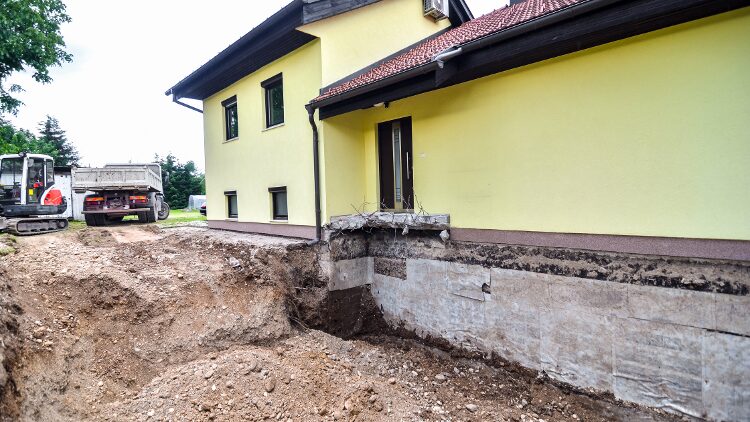There are two main types of home foundations in the Houston area. The first, pier-and-beam, involves using wood and concrete piers that form a grid about 18” above the ground. Pier-and-beam foundations are generally built with a crawlspace to allow access to electrical, plumbing, and other utilities. Because of the concrete beam that is built around the perimeter of the foundation, this type is more suitable for homes and structures that will be built with heavier materials, like stone and brick.
The second type of foundation that is often found in the Houston area is a block-and-base foundation. This type is very comparable to pier-and-beam, with the largest difference being the lack of concrete beam around the perimeter of the foundation. Instead, the siding extends down to the ground. This makes this type of foundation more suitable for lighter building materials, like wood or vinyl siding. Block-and-base foundations were once a popular choice for Houston’s older homes.
With either foundation type, over time, the house can begin to settle and crack because the beam foundation at the base can no longer support the structure. While time itself is a major element of this, there are other factors that contribute to this happening more rapidly.
What causes the house to settle?
Harsh weather conditions like a Houston drought or excessive rain play a large role in the structural damage of your home’s foundation. As a result of these environmental factors, the soil underneath these homes will shrink and swell, forcing the structure to shift and move. Draining issues may also contribute to faster weathering. This can cause the soil to erode rapidly, in turn shifting the foundation of your home. Other factors that can affect the foundation are age and termites. Termites can cause a great deal of damage to the wood support beams, especially where the wood meets the ground.
How do I know if my home needs leveling?
There are many warning signs that indicate you should consult a professional to talk to them about leveling your home. Thoroughly inspect the interior of your home for warning signs. Pay close attention to doors and how they open and close. If your doors once closed normally, and no longer match up with their respective frames properly or close tighter at one height than another, this is a strong indication your home may be shifting and you are in need of foundation repair.
Check your walls for signs of cracks in the drywall. These cracks are another indication, as they are created from the adjusting foundation below. Also, be sure to check the exterior of your home. Cracks in bricks that are not isolated to one brick and have a tendency to go through the mortar are also tell-tale signs of a problem below the home.
What is the process for leveling my home?
The good news is, the types of foundations most popular in Houston are the least expensive to level and repair. The reason behind this is that they are highly accessible with their built-in crawl spaces. Getting beneath the home to fix the problem areas is much easier in a pier-and-beam or block-and-base type foundation than it is with a typical concrete slab. The process begins when the rotted or damaged wooden beams are removed and replaced with new treated wood, and the house is gradually lifted to its original line of construction. Concrete blocks are then installed and fitted with metal termite darts to keep unwanted critters away. These concrete base blocks, or pads, are fundamental to the foundation repair process.
The leveling of your home’s foundation does not have to be a scary process! A professional diagnosis of any issues will give you peace of mind – and since it’s below your home, disruption to your everyday life is very limited!
**This post has been edited from its original content.

